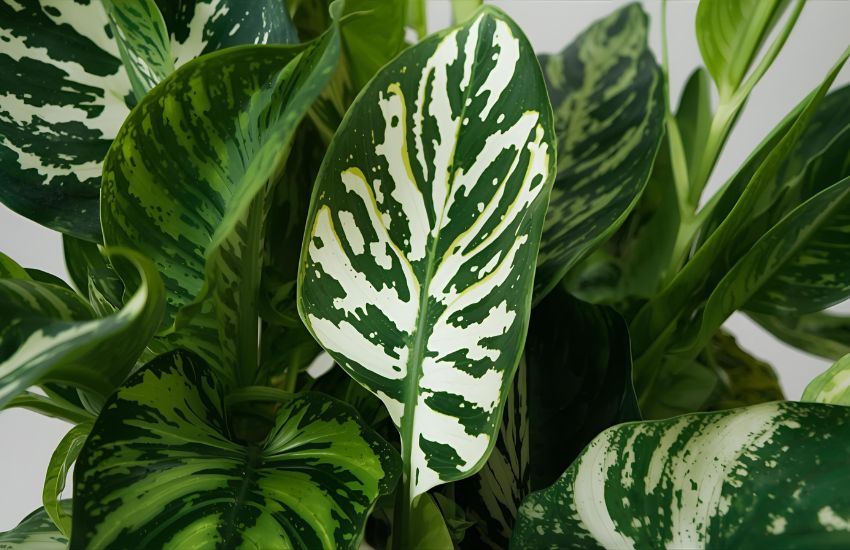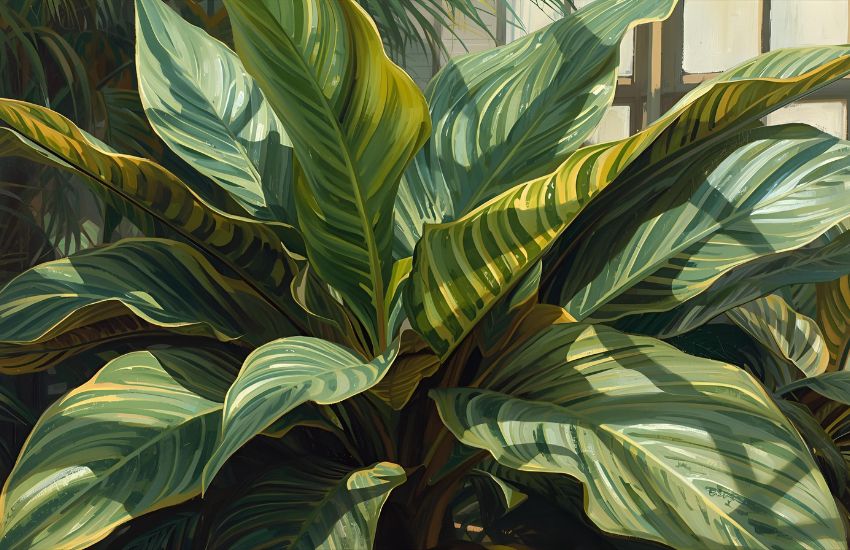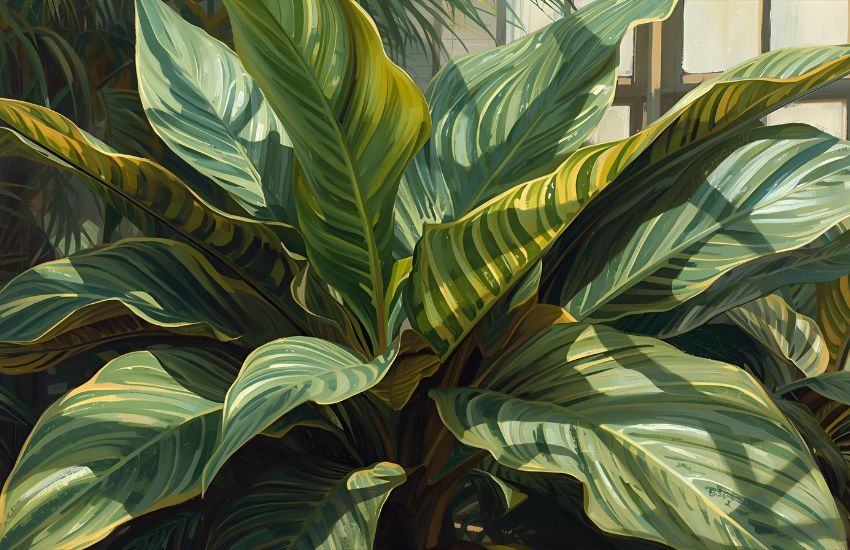The striking Dieffenbachia Cheetah Plant – XL stands out as a bold indoor houseplant that can transform your living space with its dramatic foliage. Known for its broad, patterned leaves, this dieffenbachia seguine, also called dumb cane or leopard lily, combines aesthetic appeal with air-purifying benefits, making it a perfect choice for both home and office gardens. Its cane-like stems support lush green leaves that create a vibrant, tropical atmosphere, while its low-maintenance nature allows you to enjoy its beauty without constant effort.
The Dieffenbachia Cheetah Plant – XL is a striking indoor plant that enhances any space with its bold, patterned foliage. Perfect for modern décor, it thrives in indirect light and requires moderate watering. Beyond its visual appeal, this XL plant also helps purify indoor air, making it an ideal combination of beauty and functionality for your home or office.
In this guide, you’ll discover practical tips on pot selection, lighting requirements, watering routines, and proper soil care to keep your dumb cane thriving. By the end, you’ll have a complete understanding of how to grow a vibrant Dieffenbachia Cheetah Plant that enhances your indoor garden while adding natural charm and cleaner air.
Dieffenbachia Cheetah Plant XL: Appearance, Growth Habits, and Toxicity Facts

Striking Appearance and Variegation
The Dieffenbachia Cheetah Plant XL is a bold houseplant admired for its dramatic foliage. Its large, broad leaves variegate in striking patterns of green and creamy yellow, creating a visual contrast that brightens any interior space. The leaves may yellow slightly with age or improper care, signaling a need for attention. Native to Mexico, this plant brings a touch of tropical elegance to your home, making it a centerpiece for décor enthusiasts.
Growth Habits and Environmental Needs
This houseplant thrives in shade or indirect filtered sunlight, avoiding harsh direct sunlight that can scorch its delicate leaves. It prefers a moist and damp environment, with potting mix that drains well to prevent root rot. Maintain consistent temperature between 18–24°C to ensure optimal growth. Fertilize regularly, ideally twice a week during the growing season, to help your plant flourish.
Toxicity and Safety Considerations
All dieffenbachias are toxic, and ingestion can cause irritation to the mouth, throat, and digestive tract. It is essential to keep this plant away from children and pets, as even minor contact or ingestion can result in discomfort. While handling the plant, wear gloves and wash your hands afterward to avoid skin irritation. Educating your household about the plant’s toxicity ensures everyone enjoys its beauty safely.
Tips for Thriving Indoors
To help your Dieffenbachia Cheetah Plant XL thrive, maintain a consistent watering routine that keeps the soil slightly moist but not soggy. Avoid letting the plant sit in stagnant water. Regularly wiping leaves will help filter dust, improving photosynthesis and preserving its vibrant variegation. Proper care ensures that this majestic houseplant remains healthy and continues to thrive as a striking focal point in your home.
Cultivation Tips for Dieffenbachia Plant: Soil, Water, and Lighting Needs

- The Dieffenbachia plant, a member of the Araceae family and a popular indoor plant, is valued for its lush foliage and natural air purifier qualities indoors.
- Use a well-draining potting mix rich in organic matter to provide nutrients and prevent waterlogging.
- Maintain proper humidity to keep dieffenbachia leaves vibrant and healthy; using a humidifier or placing the plant in naturally humid areas indoors can help.
- Water the plant regularly, keeping the soil lightly moist while avoiding excessive damp conditions that could cause root rot.
- Position the plant where it receives bright, indirect light, and avoid direct sunlight, which can scorch leaves and lead to yellowing.
- Native to Central America and the West Indies, this tropical plant adapts well to indoor environments and is easy to grow for both beginners and experienced gardeners.
- Its dramatic variegated foliage adds natural decor to your home, making it a striking addition to any room.
- With proper soil, watering, and humidity, your Dieffenbachia will thrive while improving indoor air, enhancing your living space among other popular indoor plants.
Maintain Ideal Humidity, Temperature, and Fertilizer for Healthy XL Plants

Optimizing Humidity for Thriving Foliage
To help your XL Dieffenbachia plant flourish, maintaining proper humidity is essential. These tropical plants, native to Central America and southern Mexico, thrive in environments with consistent moisture in the air. High humidity prevents the leaves from drying out, curling, or scorching. You can use a humidifier or regularly mist the foliage to create a balanced atmosphere that keeps the plant healthy and vibrant.
Temperature and Light Considerations
Dieffenbachia prefers stable indoor temperatures, ideally between 18–24°C. Sudden changes can stress the plant and hinder growth. Position your plant where it receives filtered sunlight to encourage robust growth, while you avoid direct sunlight, which can scorch the leaves and cause permanent damage. These measures help maintain strong, glossy foliage for your ornamental plant.
Fertilization Practices
Feeding your XL Dieffenbachia during spring and summer ensures it gets the nutrients needed for vibrant growth. Apply fertilizer to the top inch of soil to promote root absorption without overwhelming the plant. Regular fertilization encourages new leaf production and strengthens the plant’s natural resilience.
Understanding Toxicity and Safety
Known for its toxicity, all Dieffenbachias contain calcium oxalate crystals in the form of raphides, which can cause swelling, irritation, and discomfort if chewed. Leaves can cause serious reactions upon ingestion, making it vital to keep the plant out of reach of children and pets. Awareness of these risks ensures safe enjoyment of this ornamental centerpiece in your home.
By carefully managing humidity, stable temperatures, appropriate lighting, and thoughtful fertilization, you can ensure your XL Dieffenbachia thrives, remains visually stunning, and adds a tropical touch to your indoor space while maintaining safety and longevity.
Conclusion
In summary, the Dieffenbachia Cheetah Plant XL is a striking houseplant that adds tropical elegance while improving moisture and air quality indoors. With proper care—including maintaining dry soil between waterings, using houseplant fertilizer applied carefully, and ensuring the plant can tolerate stable temperate conditions—you can help it flourish.
Remember that the sap contains a natural toxin, and exposure may lead to minor side effects, so always handle the plant with care. Like Monstera and other tropical favorites, Dieffenbachia can also help filter harmful compounds such as formaldehyde and benzene from your living space when well-maintained. Using fertilizer diluted to recommended strength encourages healthy growth without overwhelming the plant.
Take the step today to cultivate your Dieffenbachia Cheetah Plant XL and transform your home into a lush, vibrant indoor oasis. Bring this magnificent tropical beauty into your living space and enjoy the combination of decor, air-purifying benefits, and the unique charm only Dieffenbachia can provide.
Frequently Asked Questions (Dieffenbachia Cheetah Plant – XL: Bold Indoor Plant for Decor and Clean Air)
Do Dieffenbachia plants clean the air?
Yes, Dieffenbachia plants can help clean the air by filtering certain indoor toxins such as formaldehyde and xylene, according to NASA’s clean air study. While they contribute to improved air quality, their effect is modest compared to ventilation. Additionally, Dieffenbachia is toxic if ingested, so it should be kept away from pets and children.
Is Dieffenbachia a good indoor plant?
Yes, Dieffenbachia is a good indoor plant due to its striking foliage and ability to thrive in low to medium light conditions. It helps enhance indoor aesthetics and requires moderate care, making it suitable for homes and offices. However, it is toxic if ingested, so it should be kept away from pets and small children.
Is Dieffenbachia a lucky plant?
Yes, Dieffenbachia is often considered a lucky plant because it is believed to bring positive energy, prosperity, and good fortune into homes. Its lush green foliage symbolizes growth and abundance, making it a popular choice for indoor decoration. While mainly valued for its beauty and air-purifying qualities, many cultures also associate it with good luck and harmony.
What are the benefits of Dieffenbachia plant?
Dieffenbachia, also known as Dumb Cane, is a popular indoor plant valued for its attractive foliage and air-purifying qualities. It helps improve indoor air quality by filtering toxins and adding humidity to the environment. Its lush green leaves enhance home décor and create a calming atmosphere. Additionally, it’s relatively easy to maintain, making it ideal for beginners.
